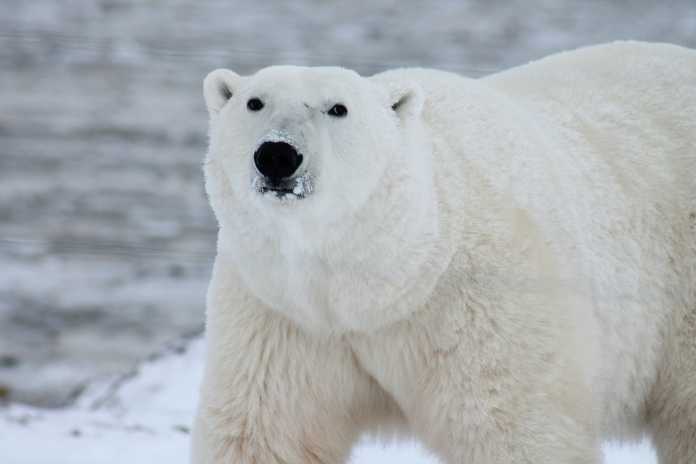Ever since Al Gore claimed in his movie An Inconvenient Truth that climate change threatens polar bears, polar bears have become the go-to animal for climate scares, documentaries, and most importantly, fund-raising in the name of “saving the Earth.” But, looking at real-world data, we should celebrate the good news that polar bears had yet another good year in 2020.
In the State of the Polar Bear Report 2020, published February 27 on International Polar Bear Day by the Global Warming Policy Foundation (GWPF), zoologist Dr. Susan Crockford explains that while the climate change narrative insists that polar bear populations are declining due to reduced sea ice, the scientific literature doesn’t support such a conclusion.
Crockford clarifies that the International Union for Conservation of Nature (IUCN)’s 2015 Red List assessment for polar bears, which Facebook uses as an authority for ‘fact checking’, is seriously out of date. New and compelling evidence shows that bears in regions with profound summer ice loss are doing well.
Included in that evidence are survey results for 8 of the 19 polar bear subpopulations, only two of which showed insignificant declines after very modest ice loss. The rest of the polar bear populations were either stable or increasing, and some despite major reductions in sea ice. As of 2020, the global polar bear population size is now almost 30,000 – up from about 26,000 in 2015.
Dr. Crockford points out that in 2020, even though summer sea ice declined to the second-lowest levels since 1979, there were no reports of widespread starvation of bears, acts of cannibalism, or drowning deaths that might suggest bears were having trouble surviving the reduced-ice season.
As Crockford’s report reveals, plankton growth – the critical health measure of marine life in the Arctic – reached record highs in August 2020. More plankton (‘primary productivity’) due to less summer ice means more fodder for the entire food chain, including polar bears. This explains why bears are thriving in areas such as the Barents Sea, which have experienced reduced levels of sea ice.
Dr. Crockford notes that, ironically, polar bears in western Hudson Bay experienced excellent ice conditions for the fourth year in a row in 2020. Bears were fat and healthy when they arrived on shore for the summer.
It seems that polar bears are more flexible in their habitat requirements than experts assumed and less summer ice has so far been beneficial rather than detrimental, despite “expert” claims that sea ice loss will hurt them.
Crockford explains, “Polar bears continue to be described as ‘canaries in the coal mine’ for the effects of human-caused climate change, but the evidence shows they are far from being a highly-sensitive indicator species. It’s not a myth: 2020 appears to have been another good year for polar bears.”
- Results of three new polar bear population surveys were published in 2020 and all populations were found to be either stable or increasing.
- Southern Beaufort polar bear numbers were found to have been stable since 2010, not reduced as assumed, and the official estimate remains about 907.
- M’Clintock Channel polar bear numbers more than doubled from 284 in 2000 to 716 in 2016, due to reduced hunting and improved habitat quality (less multi-year ice).
- At present, the official IUCN Red List global population estimate, completed in 2015, is 22,000-31,000 (average about 26,000) but surveys conducted since then, including those made public in 2020, would raise that average to almost 30,000. There has been no sustained statistically significant decline in any subpopulation.
- Contrary to expectations, a new study has shown that polar bear females in the Svalbard area of the Barents Sea were in better condition (i.e. fatter) in 2015 than they had been in the 1990s and early 2000s, despite contending with the greatest decline in sea ice habitat of all Arctic regions.
- Primary ocean food source productivity in the Arctic has increased since 2002 because of longer ice-free periods and hit records highs in 2020. More fodder for the entire Arctic food chain explains why polar bears, ringed and bearded seals, and walruses are thriving despite sea ice loss.
The ‘State of the Polar Bear Report 2020’ is free to download and read.
Download the report here.
Crockford, S.J. 2021. The State of the Polar Bear Report 2020. Global Warming Policy Foundation Report 48, London.


















To me is the bigger story that after 15 years at the U of Victoria Dr Crockford was let go in 2019 because of her work with Polar Bears. Shameful as she was highly published and recognized, but she was cancelled for not saluting the climate change flag.
She is well spoken and would be a great interview for you. Both on her work, but also her backstory. Heard her on a Calgary radio station interview and is she is very interesting!
John Ewing
Calgary
Superb, Dr Crockford, as ever the facts not the BS of unsuccessful ‘Elite.’
I have always admire Dr C and her determination to keep telling the truth.
Cliff Jonson.